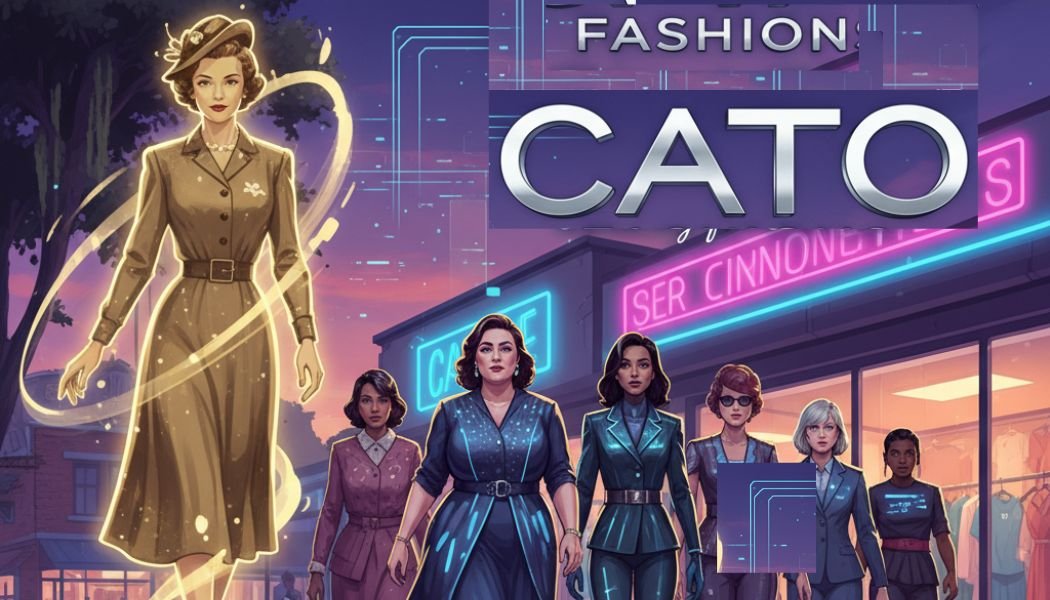I. Introduction: Ever Heard of Fashion Cato?
You might have driven past one nestled in a familiar strip mall, or perhaps it’s a cherished, albeit quiet, mainstay of your wardrobe. But I suspect Fashion Cato harbors a more intriguing narrative than one might initially assume. A specialty retailer, Cato has been outfitting women, particularly across the Southeast, for decades with accessible, stylish clothing, distinguished by a robust selection of plus sizes. Our exploration will endeavor to unfurl its captivating history, scrutinize contemporary customer sentiment, catch glimpses of internal vicissitudes, and, importantly, contemplate its strategic imperatives for navigating the turbulent waters of the modern fashion landscape.
II. The Threads of Time: A History Woven in the South
The Cato story commences in 1946, envisioned as a family undertaking in Charlotte, North Carolina, by Wayland Cato and his kin. From these modest origins—a handful of shops gracing the main streets—arose an enterprise that would touch countless lives. Cato’s corporate odyssey has been characterized by cyclical transformations, navigating periods as a public entity, then as a private concern, only to revert to public status once more. In the early 1990s, the company faced existential challenges, verging perilously close to collapse; a strategic reorientation toward discount pricing and the infusion of contemporary styles proved to be its salvation. The enterprise further diversified its offerings, encompassing its eponymous brand alongside “It’s Fashion” and the trend-conscious “Versona,” thereby broadening its appeal. The company’s receipt of “Retailer of the Year” accolades underscores its significant contribution to the retail sector.
III. What’s on the Rack Now? Cato Today
Cato’s ethos centers on providing on-trend pieces without the exorbitant price tags, particularly notable for its private labels. A champion of inclusive sizing, offering stylish options from size 2 to 28, moving far beyond “matronly” stereotypes. The Cato customer base is broad, encompassing rural trendsetters to diverse urban communities, all seeking value and style. Typically, the Cato store experience is rooted in accessibility – found in strip malls, often adjacent to major discounters. Customer feedback presents a mixed bag: loyal patrons celebrate the unbeatable prices, trendy finds, and often stellar in-store customer service, while others cite concerns about inconsistent quality, online ordering issues, difficult returns, and lackluster corporate customer service.
IV. A Few Snags in the Fabric: Controversies & Challenges
The Cato narrative isn’t without its blemishes. A 2018 EEOC settlement, amounting to $3.5 million, emerged from allegations of discrimination against pregnant and disabled employees, necessitating policy and training revisions. Criticisms have also been levied against Cato’s past all-male board composition (a situation that has since been rectified). Furthermore, debates arose concerning the explicit inclusion of LGBTQ+ protections within the company’s non-discrimination policies. Beneath the surface, one finds reports of employee dissatisfaction – murmurs of low pay, feelings of being overworked, and the encumbrance of outdated systems. The company also grapples with declining revenues, store closures, and the broader economic pressures affecting discretionary spending.
V. Tailoring for Tomorrow: Future Plans & Industry Trends
Looking ahead, Cato is strategically recalibrating its footprint, planning to close underperforming stores while selectively opening new ones. This is coupled with an aggressive push to enhance its e-commerce presence. Cost-cutting measures, including corporate job reductions and supply chain optimizations, are aimed at bolstering competitiveness. Refinement of its product assortment is a key priority, aligning with evolving consumer tastes and reinforcing its commitment to “value-priced fashion.” Cato must confront the challenges posed by value-conscious consumers, the ascendance of online shopping, and the imperative for digital innovation, potentially including AI and social commerce. Cato faces formidable competition from retail giants such as TJ Maxx, Ross, Burlington, and online disruptors like Shein and Amazon Fashion.
VI. Conclusion: Will Cato Continue to Cut It?
Fashion Cato boasts a lasting legacy as an accessible fashion destination and displays a remarkable resilience. Balancing affordability, quality, and modernization for the digital era represents an ongoing challenge. Will this Southern staple succeed in adapting its style and operations to flourish in the ever-evolving retail landscape? The answer, I suspect, lies in those unassuming strip malls, where the company’s future is silently being decided.

